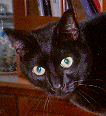Chinglish
I recently went to an exhibit at the Hong Kong Museum of Art called "Chinglish." It was a particularly interesting exhibit for me because of the way it explored the use of language in a multi-cultural place like Hong Kong. Hopefully nothing in this post is terribly interesting to you, as the exhibit has already closed. I was there on its last weekend.
This was all modern art, and sometimes it was stretching the definition of "art." One exhibit was video of people in Japan (mostly Japanese, but also some foreigners) saying "I love you" in Cantonese. Some were very confident about their pronunciation, others much more shy. Another exhibit played audio of phone calls from Hong Kong to Japan and Korea, showing what happens when two non-native speakers of English talk to each other on the phone. Another exhibit involved video cameras and a big screen. You walked into view of the camera, and a bunch of computer-generated Chinese characters followed you around the room. I don't recall the point of this one, but it was pretty cool to watch kids try to outrun the characters.
A group of pottery exhibits illustrated the how often the word "man" or "men" shows up in English through a bunch of pottery figures of people. This one was called "Menopause."
My favorite exhibit was one which showed how words can have different meanings. The exhibit was actually a room, decorated with wallpaper which, from a distance, appeared to be a beautiful white and blue design similar to what you'd find on Chinese dishes.
But when you entered the room and looked at the wallpaper up close, you saw that it was anything but beautiful. If you're easily offended, you should kind of just skip past this next photo. In fact, I'll wrap this post up right here, so you can easily avoid it.






No comments:
Post a Comment